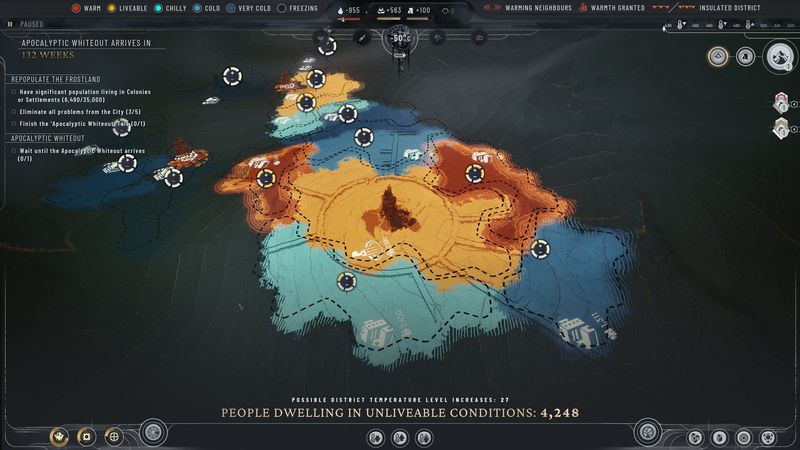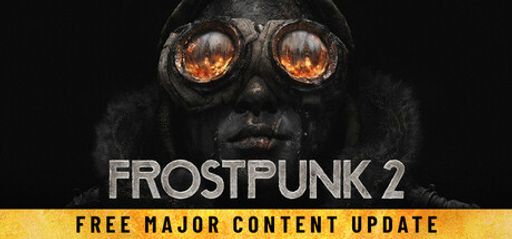I booted Frostpunk 2 equal parts eager and skeptical. After devouring the first game’s moral desperation, I wondered if 11 bit studios could recapture that magic on a bigger canvas. Set three decades after the world froze, you now manage a sprawling metropolis instead of a handful of survivors. That scale shift drives both its triumphs and its stumbles.
Overall Impressions
Frostpunk 2 stands out for its grand ambition. It swaps tight emotional beats for city-sized chaos. Every building feels crafted with care, and the whiteout storms still sting your eyes. Yet somewhere between clearing snow and balancing coal supplies, the game loses a bit of its original heart. Mixed player reviews echo this split. Some hail it as a worthy sequel. Others mourn the personal stakes of the first Frostpunk. I land in the middle—awed by its scope, but missing the intimate tension that made me flinch at each citizen’s fate.
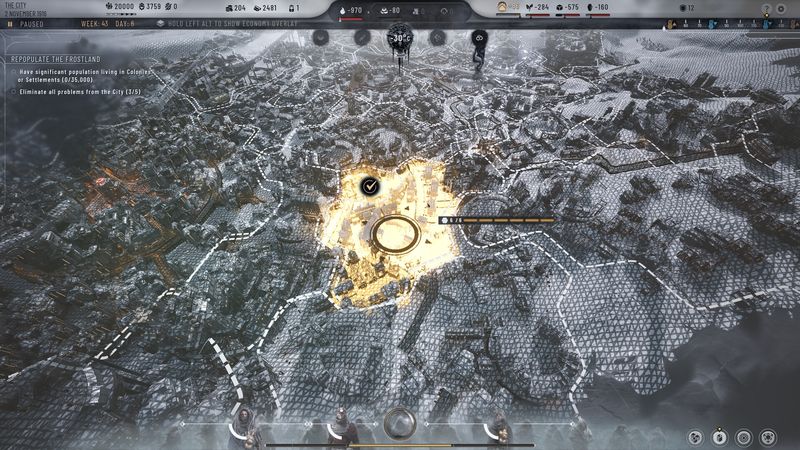
Gameplay Mechanics
Frostpunk 2 revamps core systems. You still place heaters and manage steam cores. Now you wrestle with runaway population growth, faction politics, and multi-year campaigns. One fan called it “more chaos, less oversight,” and they’re right. Resources vanish faster than your optimism at 2 A.M. The UI struggles under its own ambition. Faction-specific upgrades hide behind cryptic icons. Exploring the tundra feels twitchy when every expedition icon looks identical. And the Council Hall’s voting minigame? It makes even basic laws feel arbitrary. I passed a lifesaving edict only to watch three factions tank it, then wondered if I’d just offended my own reflection.
That said, the frantic rush to stabilize a growing city delivers fresh tension. I felt real dread when recruits flooded my infirmaries. The game forces you to juggle social order, faith, and welfare all at once. It’s surprisingly rewarding when your planning holds under pressure.
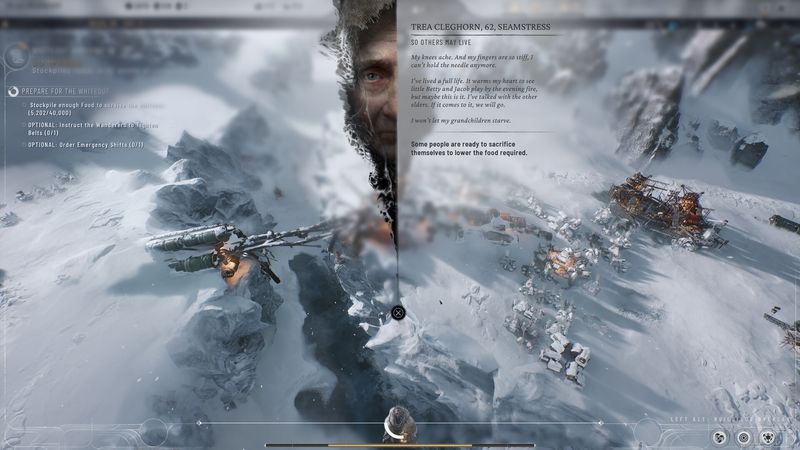
Story and Characters
If you loved Frostpunk 1’s emotionally charged vignettes, prepare to feel stretched thin. Here you guide tens of thousands instead of dozens. Individual tragedies still appear, but they often blend into the background noise. The writing feels more about ideology than personal sacrifice. You’ll read dispatches from zealots, industrialists, and disillusioned workers. Occasionally a report will land like a punch—such as a starving engineer pleading for boiler parts—but it never hits as hard as saving those last saplings in The Last Autumn.
Still, the Council Hall debates spice up the political climate. You’ll negotiate with charismatic leaders, manipulate votes, and wrestle with your own conscience. It’s a worthy experiment, even if it trades some of the original’s intimate drama.
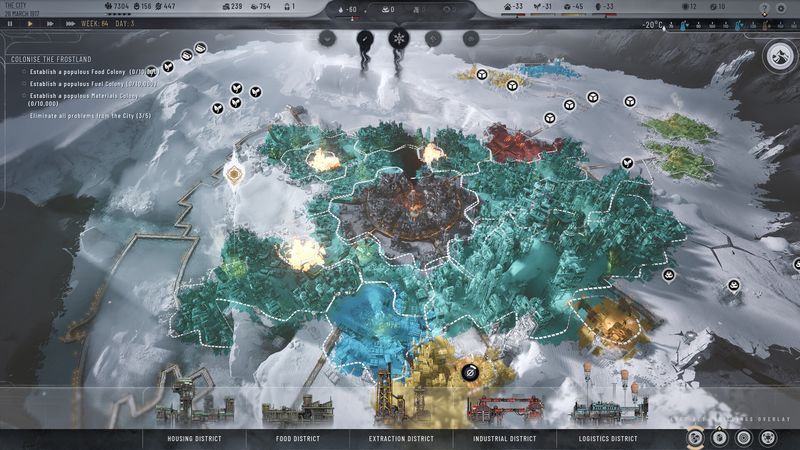
Visuals and Graphics
11 bit studios nailed the aesthetic again. Frostpunk 2’s snowstorms feel brutal and bone-chilling. Icicles dangle from lampposts, and sunset casts a blood-red glow on frost-crusted rooftops. The engine upgrade smooths animations and layers in dynamic shadows. It all looks gorgeous—even when your city collapses into anarchy. The artistic style remains hauntingly beautiful. If you replayed Frostpunk 1 just to admire the skyline, you’ll do it again here.
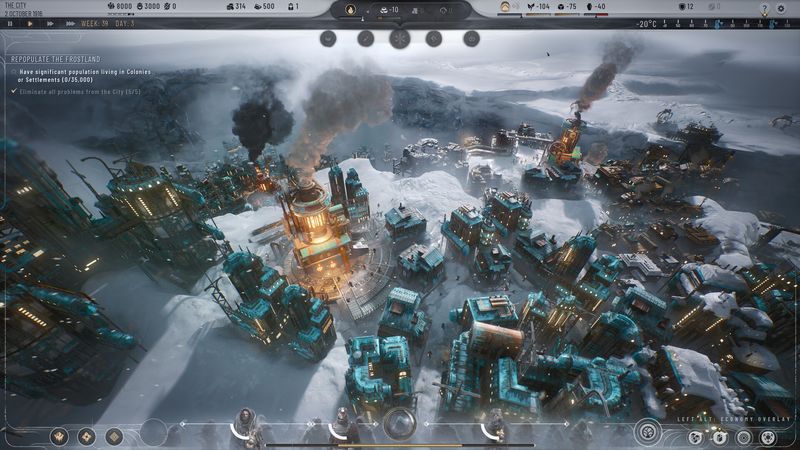
Sound and Music
The soundtrack swells and recedes like an icy tide. Composer Jacek Witkowski returns with brooding strings and hollow percussion. He underscores each storm with a cold stillness that seeps into your bones. Sound effects stay faithful to the world—steam hisses, metal groans, and wind whistles through empty streets. Voice acting shows up mostly in Council debates. Performances range from adequate to surprisingly moving. No single line stole my heart, but together they build a convincing political arena.
Difficulty and Replayability
Frostpunk 2 ramps up complexity without much of a tutorial buffer. It expects you to adapt on the fly. That can feel punishing, especially when UI quirks hide crucial data. Yet I still found reasons to return. Each faction path tweaks the tech tree, city layout, and narrative beats. I replayed once to see a more radical religious order take charge. My second run felt novel enough, though I missed the original’s brutal “last autumn” checkpoints.
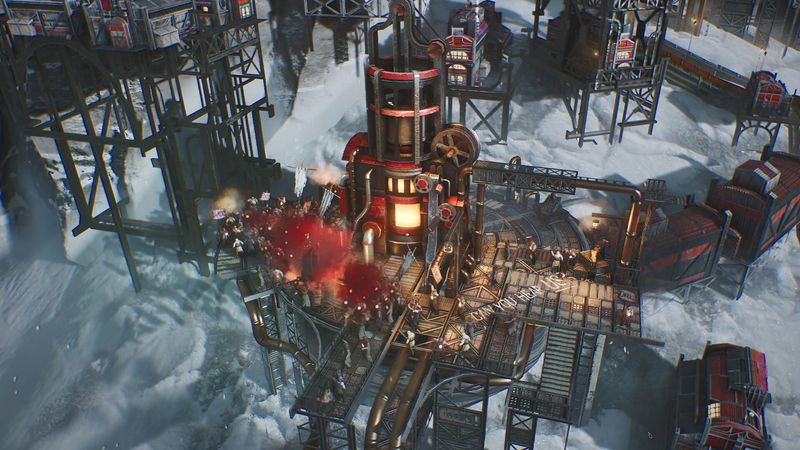
Some players report 10-hour sessions that end in frustration rather than triumph. Others log 100 hours exploring every branch. I’d say your mileage depends on how much you enjoy wrestling with spreadsheets disguised as governance.
Developer Trivia
11 bit studios revealed in a June 2024 dev diary that they built a new city-scale engine for Frostpunk 2. They also consulted social psychologists to craft more realistic faction behaviour. Those interviews explain the sometimes unpredictable Council votes. Behind the scenes, the team doubled down on scripted events to break monotony. You’ll find hidden journals about the first Frostpunk’s survivors, tying both games together in subtle ways.
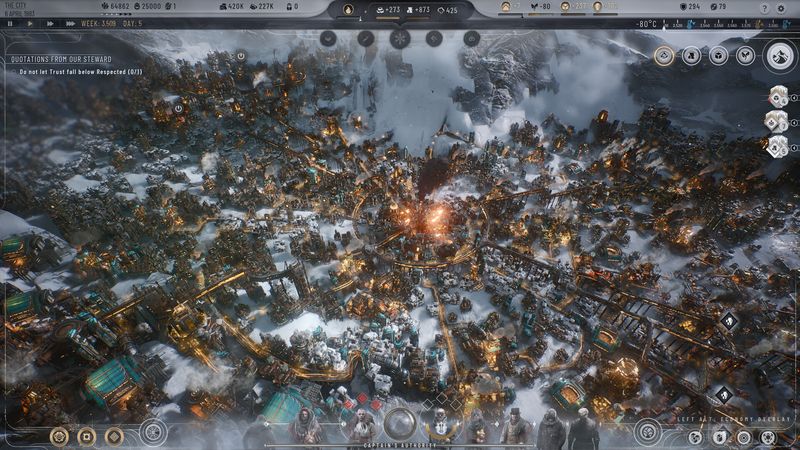
Final Thoughts
Frostpunk 2 faces the dreaded sequel curse. It outshines many city-builders in scale, style, and sheer icy flair. Yet it sacrifices some of its predecessor’s emotional punch. Polished graphics and political drama cohabit with clumsy menus and scattered pacing. I recommend Frostpunk 2 to strategy fans who crave long-term chaos and don’t need every decision to feel life-or-death.
Rating: 3.5 out of 5 stars
